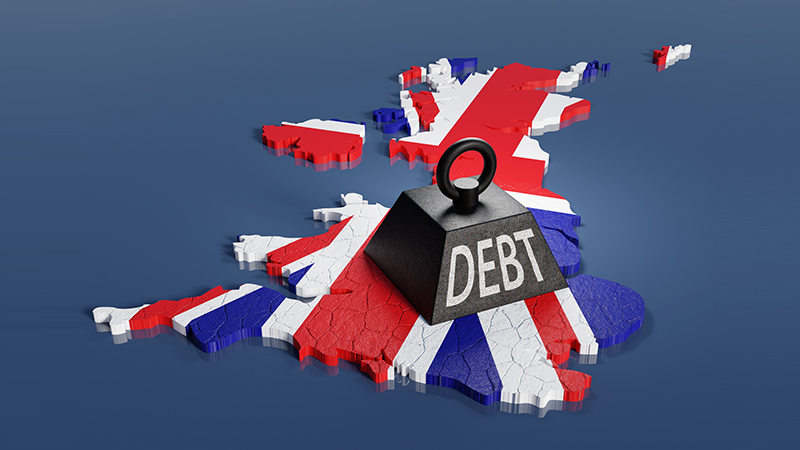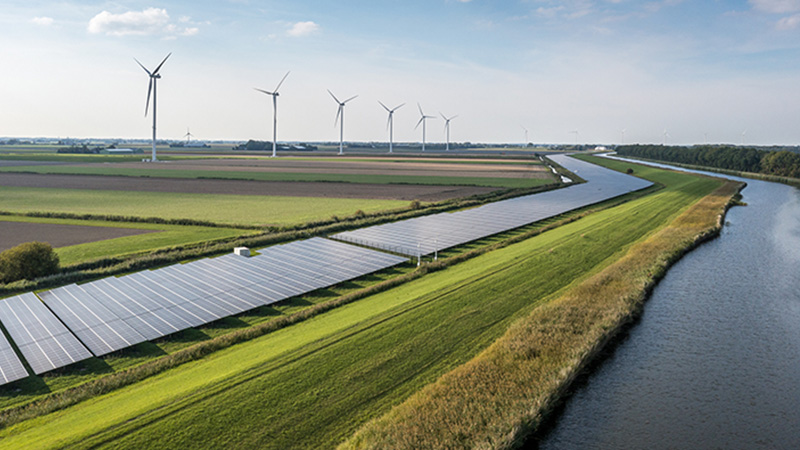David Hambidge makes running investment portfolios sound like the easiest thing in the world, structuring his Premier Asset Management multi-asset funds around two core themes: income and caution.
His attitude is not one of providing a better or different or more marketable solution to encourage long-term investors to Premier rather than its rivals, but to find investment solutions for those who do become clients.
“The need for income is not just born out of record interest rates but also out of demographic change, with the first baby-boomers retiring as part of an ageing population,” he explains. “What can we bring to the party that means we can deliver on that front?”
For those clients who are more cautious, the total return tradition would have seen them invest in government bonds or investment-grade corporate bonds that Hambidge, head of Premier AM’s multi-asset team, says are now expensive and arguably not low risk any more.
He poses a similar question: “What can we bring to the party that will help those clients so they can have a relatively smooth ride and not be invested in those sorts of asset?”
Contrarian tendency
Hambidge is almost but not quite a contrarian investor, though for all six mandates – including balanced and growth for those willing to take a bit more volatility with their returns – he invests in a vast range of asset classes.
In the two income funds – Monthly Income and Distribution – the team (which includes the experience of Ian Rees as head of research and senior investment managers Simon Evan-Cook and David Thornton) prefers equities over bonds. The former looks to generate a high income and has 38% in equities, while Distribution, with 45% in equities, aims to grow a lower initial income over time.
One demonstration of the difference in the two is shown by the underlying funds they own. Monthly Income invests in Schroder Income Maximiser while the Distribution Fund owns Schroder Income. The underlying assets are identical, the difference being that Maximiser has the covered call overlay.
UK equity income also makes up a decent core of both, but again there is a tweak here in that Hambidge invests in small-cap funds – not an obvious hunting ground for income.
“There are lots of very good income-producing smaller companies where balance sheets are strong, with very low debt and very strong dividend cover,” he says. “Of course, you get diversification through those sorts of company because one of the criticisms of UK equity income is that you open up the box and see the same old holdings.”
He admits small-cap funds may not be as compelling as they were when he started investing in them four years ago but are “still the right side of fair value”.
He adds: “We do look overseas but haven’t grasped the overseas equity income story perhaps as much as some of our peers. Quite frankly, the reason for that is even through the UK you still get exposure to overseas economies.”
He has nothing in the US – “a more expensive and crowded market” – though has had medium to long-term positions in Europe, where he has just taken profit, and Asia including Japan. For the first time in 14 years of running income money, Hambidge now has exposure to emerging markets. The Charlemagne Emerging Markets Fund makes up 2.2% of Monthly Income and 2.6% of the Distribution Fund.
“We are not ringing the bell on emerging markets and saying that they have bottomed out, but we are saying that valuations are much more attractive,” he explains.
He refuses to talk about a fixed income portion of the funds because he does not want to give the impression that anything is fixed at this point in the cycle. He talks of a “reasonable” exposure to bonds but they are perhaps not the typical plays investors would expect.
Off the institutional radar
He says: “We don’t have any government bonds, either developed or emerging, and have a record low in vanilla investment-grade corporate bonds. Where we do have exposure we have floating rate debt. We have some high yield but it’s quite ‘nichey’ like the Airlie Select US High Yield Fund, which targets US mid-sized companies that are basically off the radar of the more institutional-type bond manager.”
This is complemented by the Brookfield High Yield Fund, a European proposition.
By now, a definite pattern is becoming clear to Hambidge’s asset allocation style. He likes smaller (not small), niche, under-the-radar funds, particularly for corporate bonds. A good example is his exit from the M&G Strategic Corporate Bond Fund two years ago as it got too big to add alpha and a move into the TwentyFour Dynamic Bond Fund.
In the alternatives space he added real estate debt to take advantage of non-bank lending six months ago. He is a fan of closed-ended infrastructure and closed-ended property; specialist property includes Medicx, which invests in GP surgeries and primary healthcare facilities.
“Another area that is interesting given it is quite topical is catastrophe insurance. Again we have been invested in this in a period where we have had an abnormal amount of global catastrophic events but because when we invested we were getting paid super-normal premiums to take the risk, we found the risk/return profile was very attractive,” he says.
Low beta migration
As he moves away from income, Hambidge and the team’s asset allocation moves with it, away from conventional equities, for example, and into what he calls lower beta equities.
The Conservative Growth and Liberation Absolute Growth funds include synthetic zeros linked to a stock market but giving a finite return over a finite life.
The volatility of the equity portfolio in these two is deliberately very low and where they have bond exposure it is alternative in that it is made up of a fair amount of floating rate debt which will go down if interest rates go down but, as he asks, how much further down can they go?
He likes long/short funds with a long bias, Paul Marriage’s Cazenove Absolute Dynamic Fund, for example.
Alternatives – defined as anything with a low or not-at-all correlation to equities – include market-neutral funds such as the Kames Absolute Return Bond, Polar European Market Neutral and the Schroder GAIA CQS Credit Fund.
Alongside these Hambidge says: “The biggest one to have taken off which still has a year or two to run is the listed hedge fund space. We found everyone piling into Ucits funds in the absolute return sector – and perhaps missing a trick in the listed space where you can buy the same sorts of asset at 20% discount to NAV, where you had a catalyst of that discount being reduced or actually disappearing altogether.”
Throughout the team’s multi-asset range, their philosophy is quite simple: be fundamentals-driven, aim for a genuine lack of correlation and never buy an asset class in isolation.










